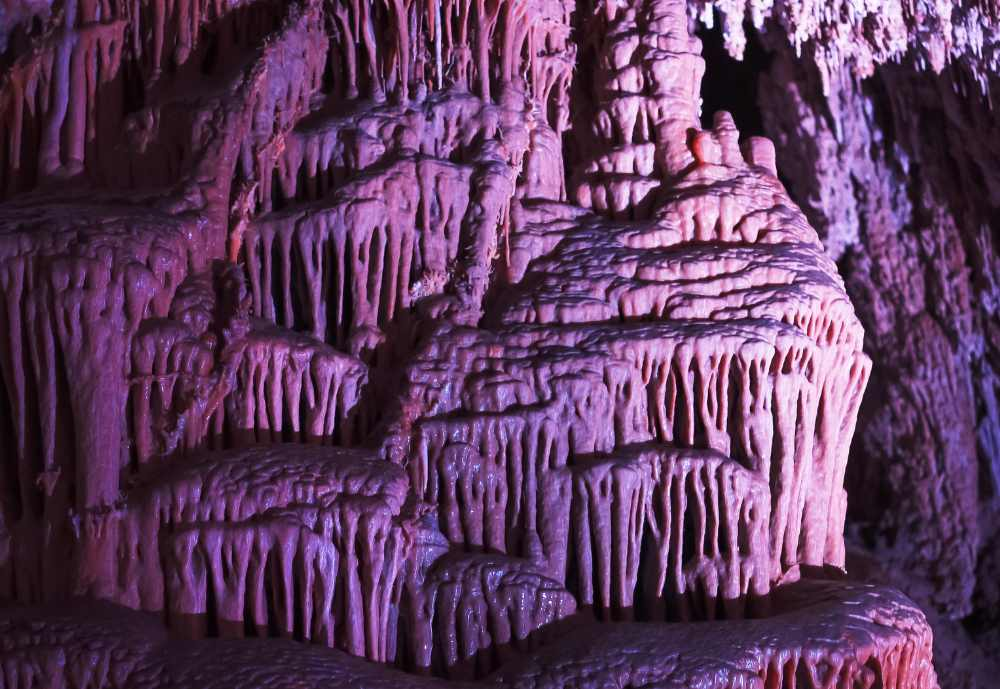Lewis & Clark Caverns State Park is a must-visit destination for anyone exploring Montana’s natural beauty. The park is located approximately 25 miles west of Three Forks and features one of the most extensive limestone cavern systems in the Northwest.
The caverns were discovered in 1895 by Tom Williams, but were named after the famous explorers Lewis & Clark, who passed through the area in 1805.
Visitors can take a guided tour of the caverns and marvel at the stunning formations, including stalactites, stalagmites, helictites, and flowstone.

In addition to the caverns, Lewis & Clark Caverns State Park offers a variety of outdoor activities for visitors to enjoy. The park has over eight miles of hiking trails that wind through the surrounding hills and offer breathtaking views of the surrounding landscape.
The park also has a campground with 40 sites, including tipi rentals, and a picnic area with tables and grills. The park is also home to the Jefferson River, which offers excellent fishing opportunities for trout and other species.
For those looking for a unique experience, Lewis & Clark Caverns State Park offers several special events throughout the year, including guided cave tours by candlelight, full moon hikes, and stargazing events.
The park also hosts an annual bat festival, where visitors can learn about the importance of bats in the ecosystem and observe them in their natural habitat. Whether you’re looking to explore the caverns, hike through the hills, or simply relax in the beautiful Montana countryside, Lewis & Clark Caverns State Park has something for everyone.
Frequently Asked Questions
The length of time it takes to walk through Lewis and Clark Caverns can vary depending on the type of tour you take. The most popular tour is the Classic Tour, which lasts approximately 1 hour and 30 minutes and covers about 0.6 miles of walking distance. This tour takes visitors through the most spectacular parts of the caverns and highlights the unique formations, including stalactites, stalagmites, and helictites.
There is also an Adventure Tour that is more physically demanding and lasts approximately 2 hours and 15 minutes. This tour covers about 2 miles of walking distance and includes crawling through narrow passages and climbing over rocks.
It’s important to note that both tours require visitors to walk up and down stairs and navigate through narrow passages, so comfortable shoes and appropriate clothing are recommended. Additionally, visitors should be in good physical condition and able to walk for extended periods of time. Overall, the length of time it takes to walk through Lewis and Clark Caverns depends on the tour you take and your physical fitness level.
Absolutely! The Lewis and Clark Caverns are a true hidden gem. The stunning cave formations, rich history, and unique natural beauty make it a must-visit destination for anyone traveling to Montana.
No, Lewis and Clark did not discover the Lewis and Clark Caverns in Montana. The caverns were discovered in 1895 by a local cowboy named Tom Williams. The caverns were named after the famous explorers Meriwether Lewis and William Clark, who passed through the area in 1805, and the park surrounding the caverns was established in 1937. While Lewis and Clark did not discover the caverns, they did camp near the site on July 31, 1805, along Antelope Creek.
Yes, it is possible to drive the Lewis and Clark Trail. The Lewis and Clark Trail is a historic route that follows the outbound and inbound routes of the famous Lewis and Clark Expedition of 1803-1806. The route covers over 4,900 miles and passes through 16 states, from Pittsburgh, Pennsylvania to the mouth of the Columbia River in Oregon.
In 1965, the Lewis and Clark Trail Commission approved an official marker for the Lewis and Clark Trail highway, which made it easier for travelers to follow the route. The original auto route featured a system of more than 6,100 miles of roads as of 2016, which has since been expanded eastward to Pittsburgh.
Today, visitors can drive the Lewis and Clark Trail and explore the historic sites and landmarks along the way. Some popular stops include the Lewis and Clark National Historic Trail Interpretive Center in Great Falls, Montana, the Fort Mandan Interpretive Center in North Dakota, and the Lewis and Clark Boathouse and Nature Center in Missouri.
